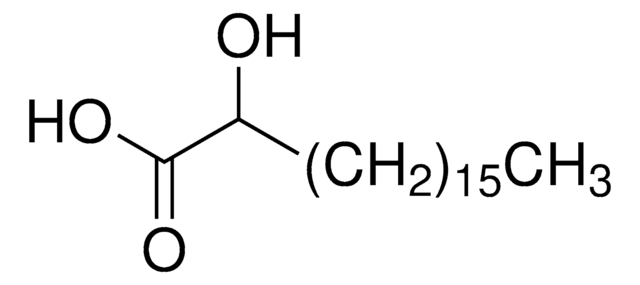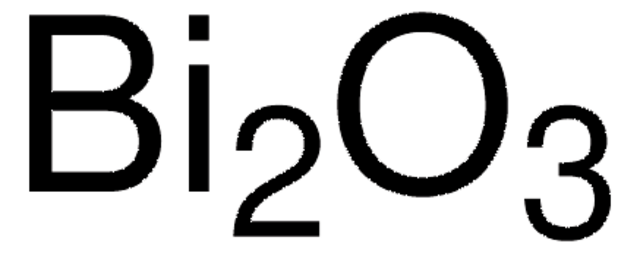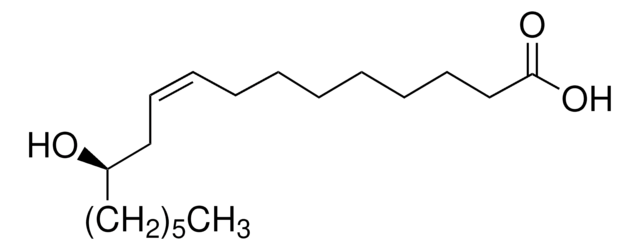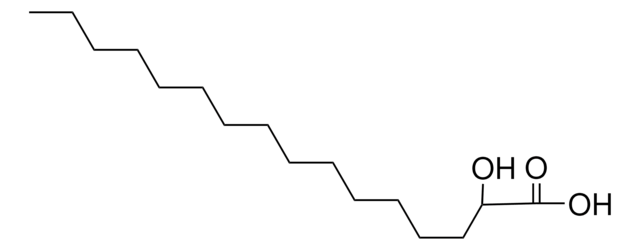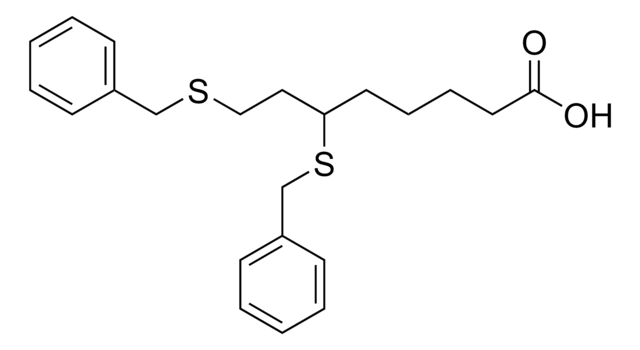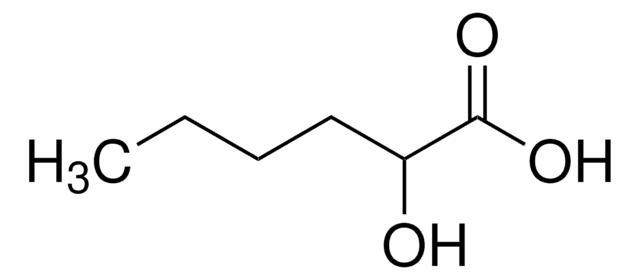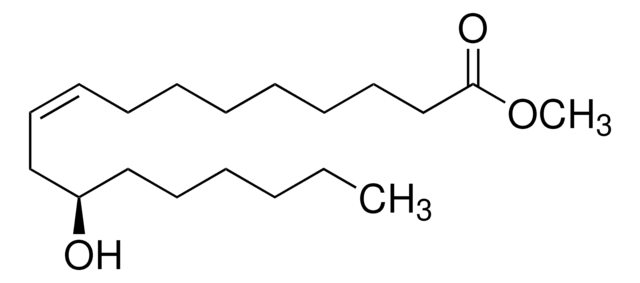SML0256
2OHOA
≥98% (HPLC)
Synonym(s):
(9Z)-2-Hydroxy-9-octadecenoic acid; cis-2-Hydroxy-9-octadecenoic acid, 2-Hydroxy Oleic Acid, Minerval
About This Item
Recommended Products
Quality Level
Assay
≥98% (HPLC)
storage condition
protect from light
color
white to tan
solubility
DMSO: >20 mg/mL
storage temp.
room temp
SMILES string
CCCCCCCC\C=C/CCCCCCC(O)C(O)=O
InChI
1S/C18H34O3/c1-2-3-4-5-6-7-8-9-10-11-12-13-14-15-16-17(19)18(20)21/h9-10,17,19H,2-8,11-16H2,1H3,(H,20,21)/b10-9-
InChI key
JBSOOFITVPOOSY-KTKRTIGZSA-N
Application
- a modulator of the sphingolipid and glycerophospholipid pathway to study its effects on myelination in mice Charcot–Marie–Tooth type 1A (CMT1A) myelinopathy and myelinating dorsal root ganglia cultures
- in biophysical studies to study its effects on artificial membranes
- to study its interactions with major membrane lipid films
Biochem/physiol Actions
Signal Word
Danger
Hazard Statements
Precautionary Statements
Hazard Classifications
Eye Dam. 1
Storage Class Code
11 - Combustible Solids
WGK
WGK 3
Flash Point(F)
Not applicable
Flash Point(C)
Not applicable
Certificates of Analysis (COA)
Search for Certificates of Analysis (COA) by entering the products Lot/Batch Number. Lot and Batch Numbers can be found on a product’s label following the words ‘Lot’ or ‘Batch’.
Already Own This Product?
Find documentation for the products that you have recently purchased in the Document Library.
Customers Also Viewed
Our team of scientists has experience in all areas of research including Life Science, Material Science, Chemical Synthesis, Chromatography, Analytical and many others.
Contact Technical Service

